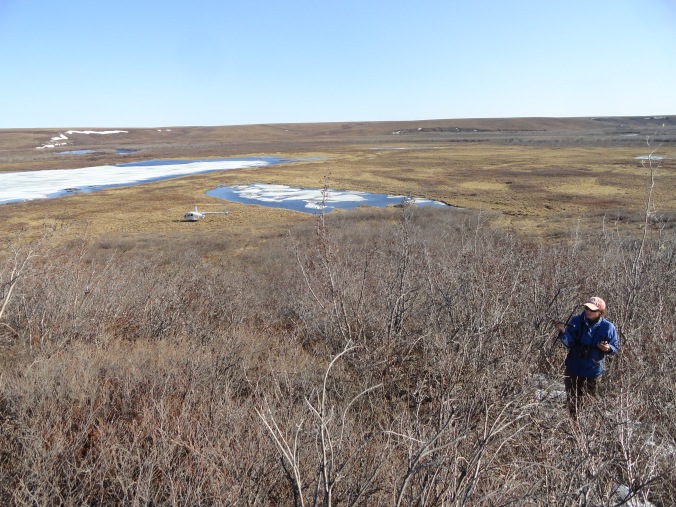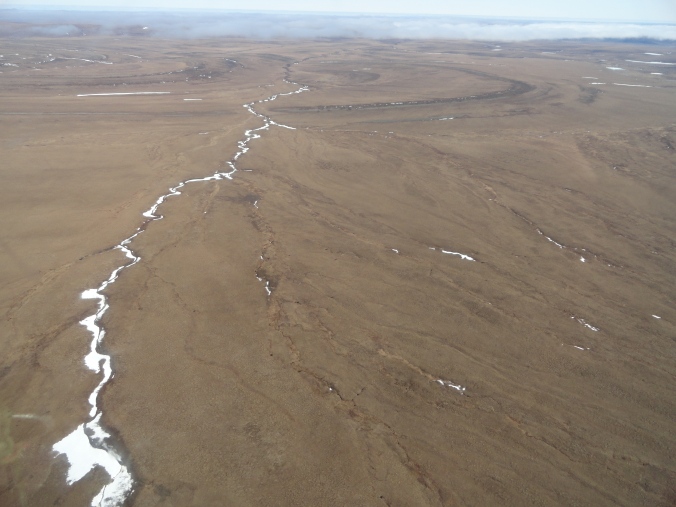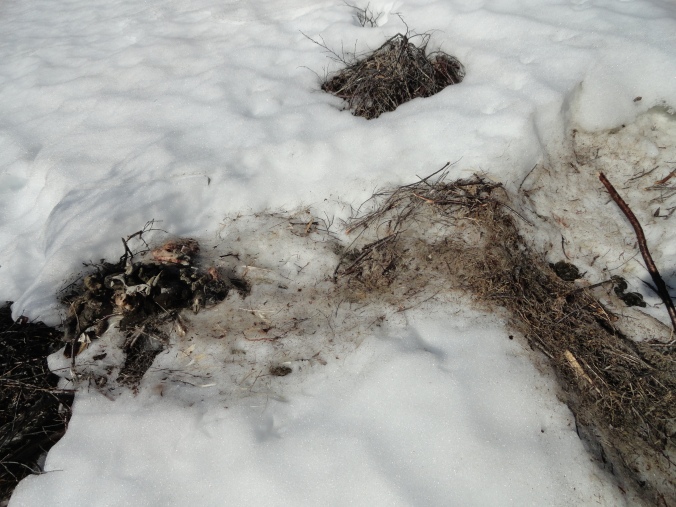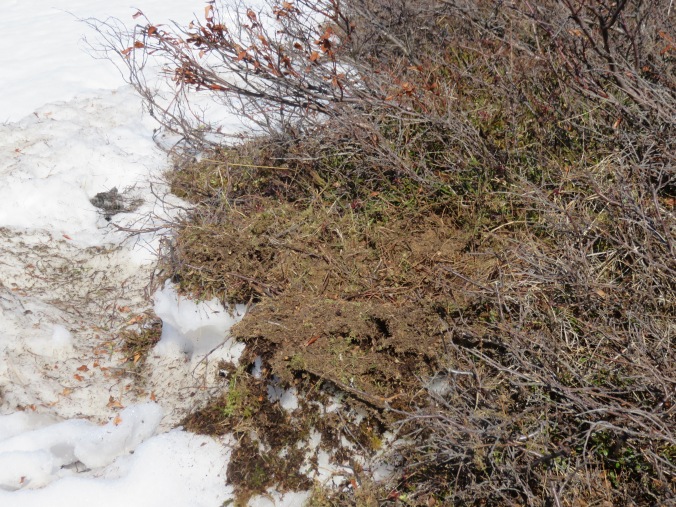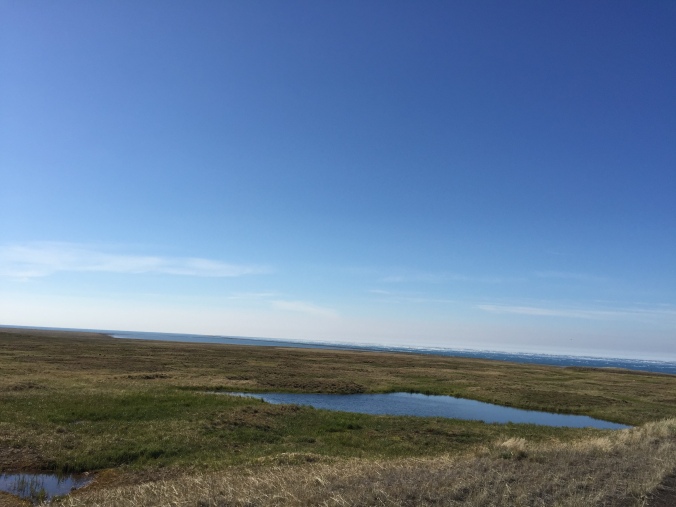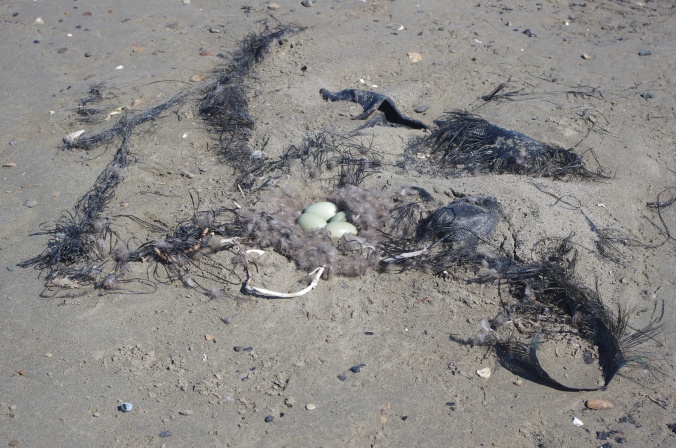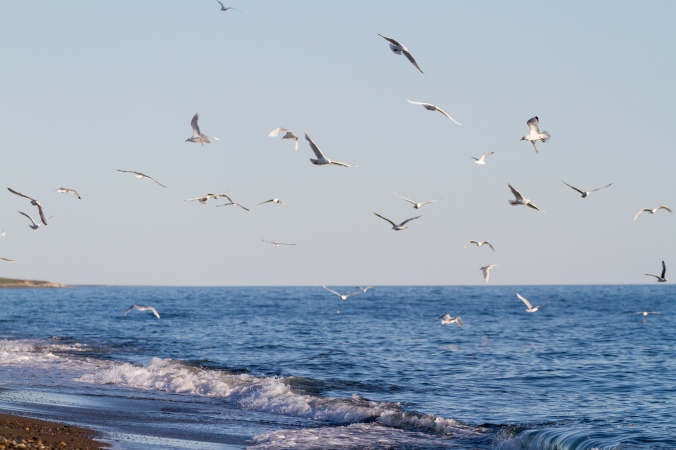
Gulls and kittiwakes feeding in the intertidal zone of a lagoon on the Chukchi Sea coast north of Kotzebue, Alaska. Photo Kevin Rodriguez.
Arctic terns flew with effortless precision, as they plunged into the outflow of an Arctic lagoon, catching their prey and returning to their nesting sites just a few hundred yards away. Glaucous gulls and black-legged kittiwakes flocked amongst the terns, while the parasitic jaegers continuously harassed these birds until they dropped their catch, swooping in to intercept the prize midair. For the three of us researching the fish of arctic lagoons, it was great to be welcomed back to camp after a long day of fish research by such a beautiful display of a productive Arctic ecosystem – the sun projecting over the sides of the nearby mountains casting a smooth orange glow on the gravel beach and the cast of characters that had congregated there to feed.
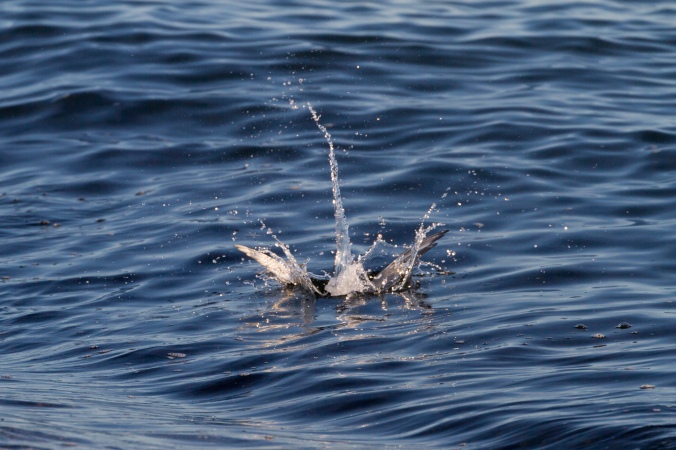
An arctic tern plunges into the water in seek of prey. Photo Kevin Rodriguez.
This commotion was not only attracting the attention of seabirds. Many marine mammals and fish also cued in on what was unfolding that night. Off in the distance, bearded seals swam stealthily with nothing but their heads exposed. Alert to our presence; they skimmed the surface of the water to maintain constant visual contact with us as we watched from the gravel beach. Groups of juvenile and adult Dolly Varden char cruised the shore, taking advantage of the seemingly never-ending supply of food. But we had yet to see what was causing this confluence of different organisms. It was not until small fish began riding the waves onto the shore that we realized the identity of the lead performer in the amazing ecological drama that was unfolding before us. Capelin, a smelt species that is an important forage fish in the Pacific, Atlantic and Arctic oceans, were “rolling” onto the beach, attracting hundreds of birds and marine mammals, and countless predatory fish. Capelin, as evidenced by the feeding frenzy, are important prey items for a host of top marine predators and act as a critical link between zooplankton and higher trophic levels. Although generally associated with pelagic (offshore) habitats in the marine environment, on this day, a huge school of capelin had chosen this small section of beach above the Arctic Circle to spawn – breeding while laying innumerable eggs along our beaches.

An arctic tern flies off carrying a male capelin snatched from the beach. Photo Kevin Rodriguez.
The sizeable swell washed the capelin up on shore by the thousands, stranding the capelin for mere seconds until the next crashing swell washed them back into the water. Capelin could be seen forming dark amorphous schools as they swam a few feet offshore, apparently waiting to fulfill their biological need to spawn while simultaneously avoiding all the hungry onlookers. Capelin are part of a group of forage fish, including other smelt and sand lance species, which spawn on beaches. Although intertidal spawning is rare, capelin are only one of two marine fish (along with the grunion, so well-known in California) that fully emerge from the water to spawn. With each successive wave, more capelin purposefully washed themselves high and dry, allowing them to deposit and fertilize eggs at the high waterline.
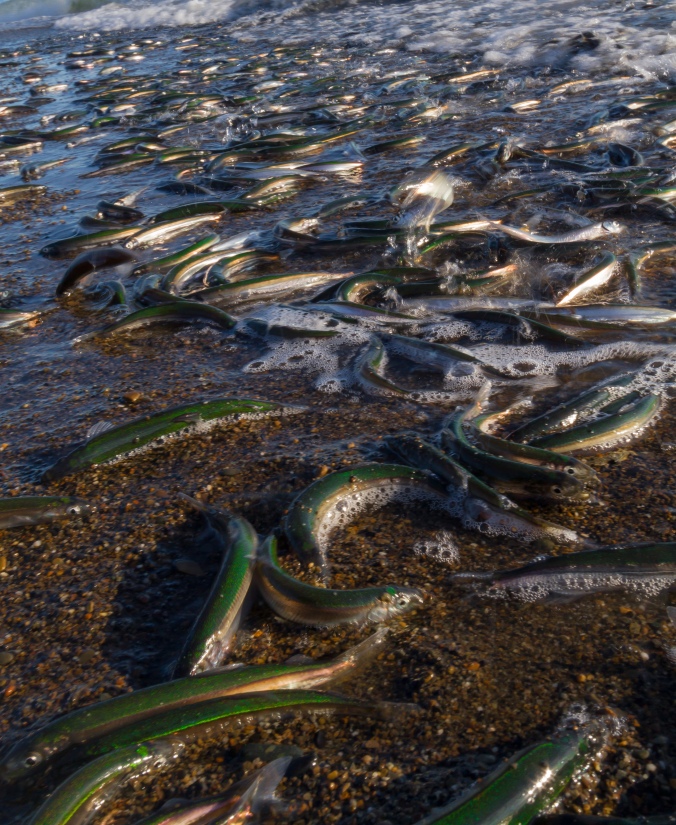
- Capelin spawning on the beach of a lagoon on the Chukchi Sea Coast. Capelin were seen spawning like this over a period of three weeks in June 2016. This event may be a new phenomenon in this area. Photo Kevin Rodriguez.
We examined the fish washing ashore and determined that most (about 95%) were males in breeding condition, distinguished by the presence of an elevated ridge of scales along their lateral ventral edges and longer pectoral fins. Why were there so many males compared to females? The literature suggests that one to three males may accompany a female onto the shore, but our sex ratio was far more skewed. How extensive are these spawning events on this coast, and how important are they to marine predators? Our collaborator, Alex Whiting with the Native Village of Kotzebue, was surprised by the event and suggested that this could be a new phenomenon in Kotzebue Sound. Alex had never encountered reports of beach spawning capelin from the subsistence fishing camps. These beaches lie within the Cape Krusenstern National Monument and our work adds to the understanding of this coastal treasure. We couldn’t have asked for a better end to an already beautiful day of Arctic lagoons research, but as always, we go to sleep with more questions that we will need to find answers to in order to understand and protect this unique Arctic environment.
